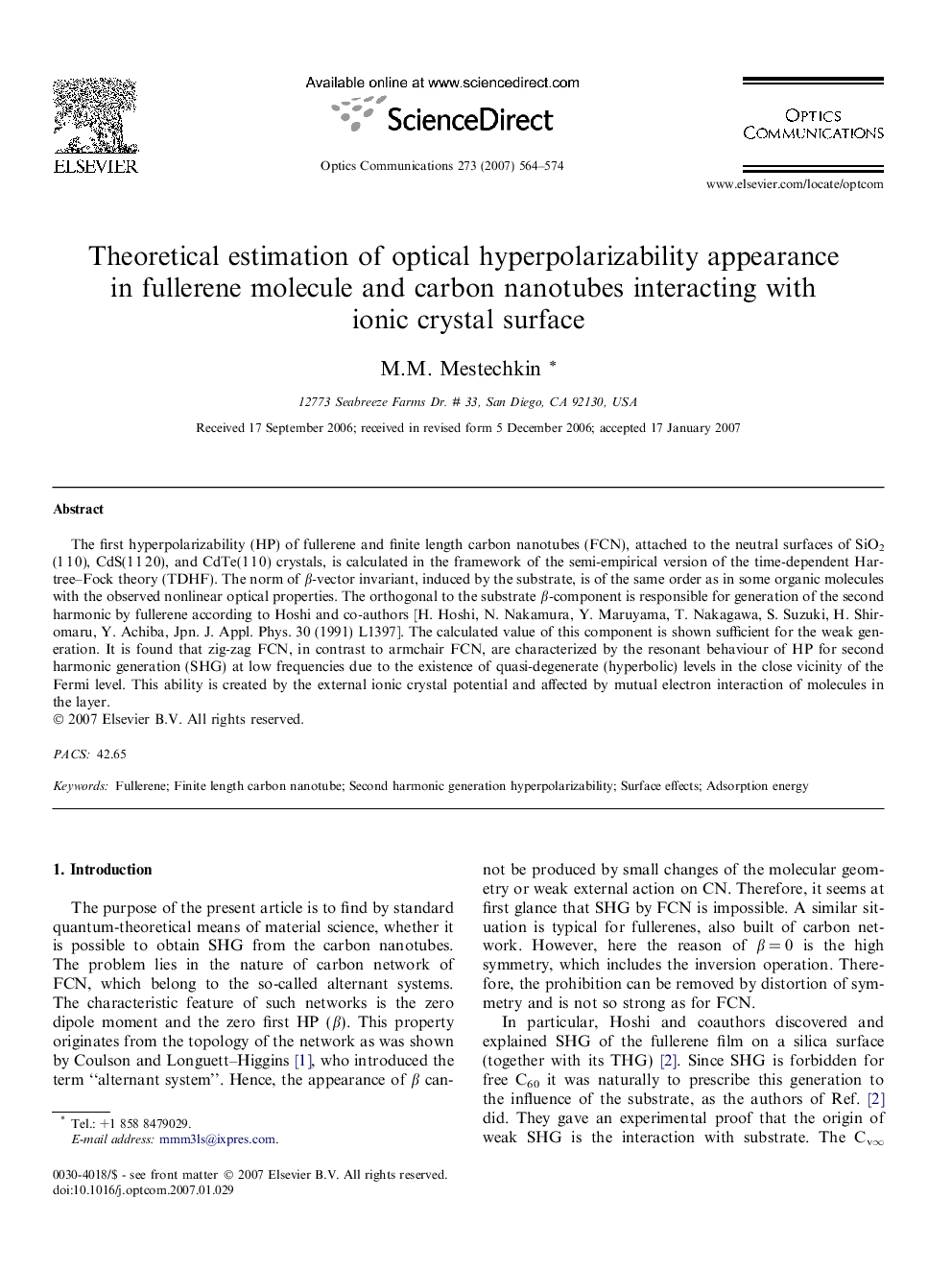| Article ID | Journal | Published Year | Pages | File Type |
|---|---|---|---|---|
| 1542279 | Optics Communications | 2007 | 11 Pages |
Abstract
The first hyperpolarizability (HP) of fullerene and finite length carbon nanotubes (FCN), attached to the neutral surfaces of SiO2 (1 1 0), CdS(1 1 2 0), and CdTe(1 1 0) crystals, is calculated in the framework of the semi-empirical version of the time-dependent Hartree-Fock theory (TDHF). The norm of β-vector invariant, induced by the substrate, is of the same order as in some organic molecules with the observed nonlinear optical properties. The orthogonal to the substrate β-component is responsible for generation of the second harmonic by fullerene according to Hoshi and co-authors [H. Hoshi, N. Nakamura, Y. Maruyama, T. Nakagawa, S. Suzuki, H. Shiromaru, Y. Achiba, Jpn. J. Appl. Phys. 30 (1991) L1397]. The calculated value of this component is shown sufficient for the weak generation. It is found that zig-zag FCN, in contrast to armchair FCN, are characterized by the resonant behaviour of HP for second harmonic generation (SHG) at low frequencies due to the existence of quasi-degenerate (hyperbolic) levels in the close vicinity of the Fermi level. This ability is created by the external ionic crystal potential and affected by mutual electron interaction of molecules in the layer.
Related Topics
Physical Sciences and Engineering
Materials Science
Electronic, Optical and Magnetic Materials
Authors
M.M. Mestechkin,
